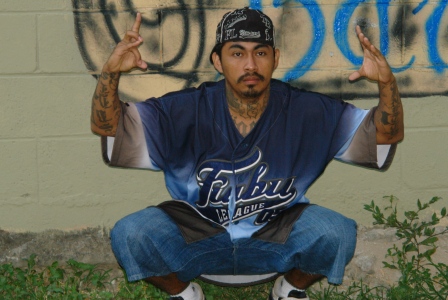Interpeace launches ‘Building a future of peace: A comprehensive set of policy proposals for the prevention of youth violence in El Salvador'

With violent crime on the increase for the last 15 years, El Salvador is at a crossroads. There is now an urgent need for preventative policies to address youth and youth gang-related violence in the country.
Interpeace releases ‘Building a future of peace: a comprehensive set of policy proposals for the prevention of youth violence in El Salvador,’ the second in a series of policy documents focused on developing constructive, lasting solutions to this persistent issue. This latest report follows the recent ‘12 strategies’ for Guatemala publication and the full series will cover the wider region.
Central America is now considered the most dangerous place in the world. Young people are most at risk from violence, either as victims or perpetrators. Holistic and inclusive policies need to be adopted across the region if this pressing issue is to be resolved.
In El Salvador alone, estimates of gang membership range from 14 000 to 165 000 (USAID, 2006). Homicide rates have increased rapidly: in 1999, the figure stood at 30 per 100 000 people. By 2009, the level had jumped to 61 per 100 000. (World Development Report 2011). 57% of those murdered in El Salvador were aged between 15 and 29 years old (FUNDAUNGO).
The full report, in Spanish, ‘Building a future of peace’ is being presented to the El Salvadorian Government on 26th May 2011.
Download the full report Spanish
The second in a series of preventative policy proposals to cover the region, this document marks the culmination of a multi-sector dialogue process which saw the participation of representatives from 17 institutions, 15 civil society organizations and 7 youth organizations. The majority of the dialogue process took place between October 2009 and October 2010 and was facilitated by Interpeace.
“Violence affecting young people, as victims or perpetrators, does not happen by accident. It is the result of social, cultural, economic and political problems that run deep in society. We need to be taking a holistic approach to tackling the issue, not just in El Salvador, but across the region,’’ explains Isabel Aguilar, Interpeace Director of the Regional Youth and Gang Violence Prevention Programme.
Like other parts of Central America, the search for solutions to the problem must be based on a comprehensive approach that addresses the factors that contribute to violence and, in turn, promotes strategies that foster the welfare and development of adolescents and youth amongst those at risk as well as offenders.
Traditionally, youth-related violence has been addressed using reactive, repressive approaches. These methods, termed the mano dura (“Iron-fisted”) approach, have been known to include actions that violate human rights, and are ultimately counter-productive.
“Violence breeds violence,” adds Aguilar. “This mano dura approach is proving ineffective in addressing the structural causes of the problem. Violence has become a way of dealing with social conflicts.”
The aim of preventative policies is to focus on treating the root causes of violence. Public policies must be developed that will tackle the issue sustainably through a holistic approach by adding preventative measures to the existing reactive ones.
“Histories of intra-family violence, violent environments at school and in the work place, youth unemployment, limited access to health services and migration issues are all contributing factors that increase the likelihood of young people being impacted by violence,” says Aguilar.
These are some of the problems that must ultimately be addressed for youth- and gang-related violence to be reduced.
The 17 strategies, and associated objectives and actions are contained in the full report. They focus on the issue from three angles: primary, secondary and tertiary prevention.
Primary prevention refers to general social and economic development measures with attention on the well-being of children, adolescents and youth.
Strategy 1: Support the family structure to meet its obligations as a place for children to grow-up
Strategy 2: Promote peaceful coexistence as part of the educational system
Strategy 3: Create opportunities for vocational training and access to descent work for young people
Strategy 4: Promote physical and mental health services for adolescents and young people as a method to prevent violence
Strategy 5: Enable young people to participate in the decision-making processes that affect them at the
community, municipal and national levels
Strategy 6: Promote organized leisure activities including sports, arts, recreation and community service
Strategy 7: Promote the creation of democratic spaces to resolve conflicts peacefully so creating safe public environments for inhabitants
Secondary prevention refers to measures to protect and improve the quality of life of vulnerable groups and victims, e.g. abandoned youth, children living in the street, youngsters already showing a tendency to violent behaviour, and victims. It also includes communities and neighbourhoods that are marginalized and show a higher incidence of violence and insecurity.
Strategy 8: Promote caring for youth at risk
Strategy 9: Promote the comprehensive prevention of violence against women
Strategy 10: Focus on young victims of violence with a focus on preventing victimization
Strategy 11: Promote the care of people associated with violent groups so they can be reintegrated into society
Strategy 12: Promote recovery initiatives for those communities overcoming high rates of violence
Tertiary prevention refers to measures focusing on the socialization and reintegration of those who have already been convicted as delinquents, in order to prevent them from relapsing.
Strategy 13: To develop respect for the human rights of those incarcerated
Strategy 14: To promote alternatives to prison for adolescents and young people in line with international standards and juvenile law
Strategy 15: Strengthen institutional capacity to care for young offenders
Strategy 16: Promote the institutional and professional capacities to provide holistic care to adolescents and youth who are kept in confinement in order to enable constructive socialization
Strategy 17: Promote the improvement of security in prisons to benefit those incarcerated, visitors, staff and the general public.
Download the full report Spanish
